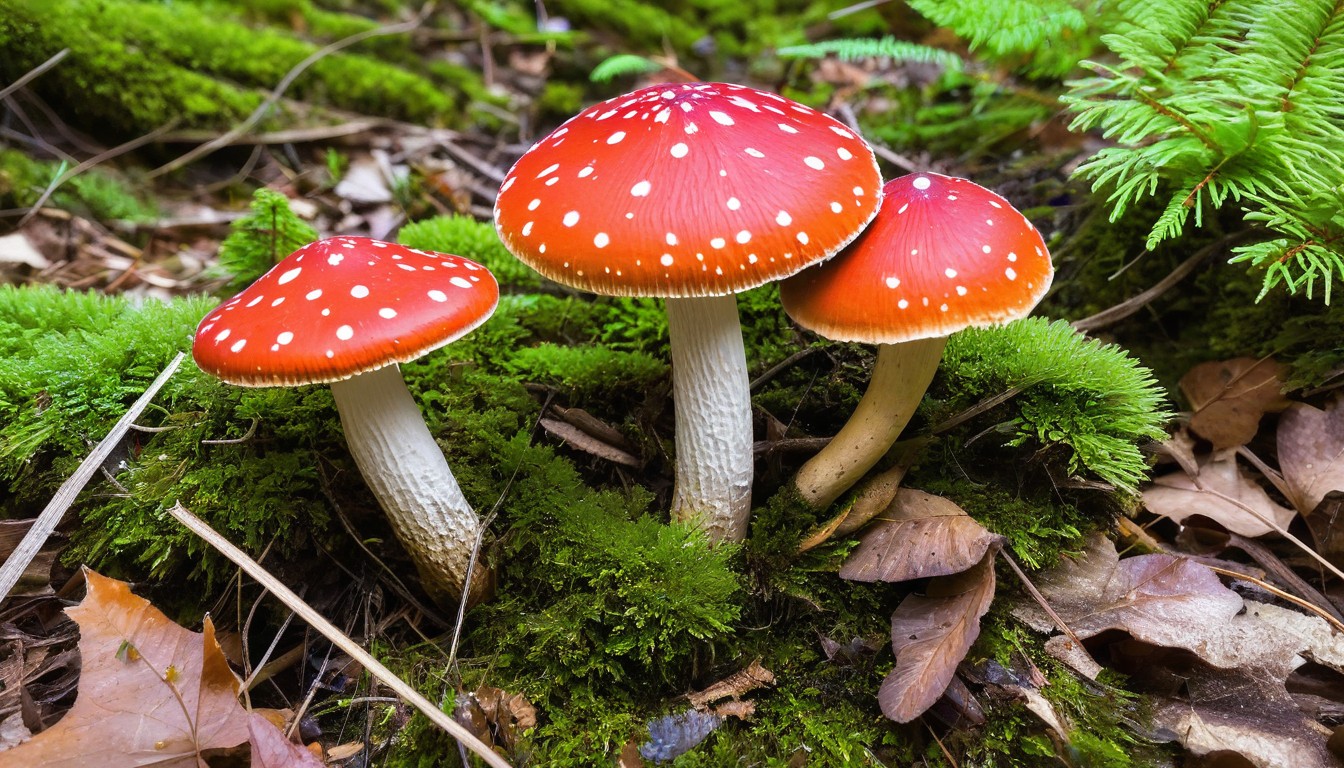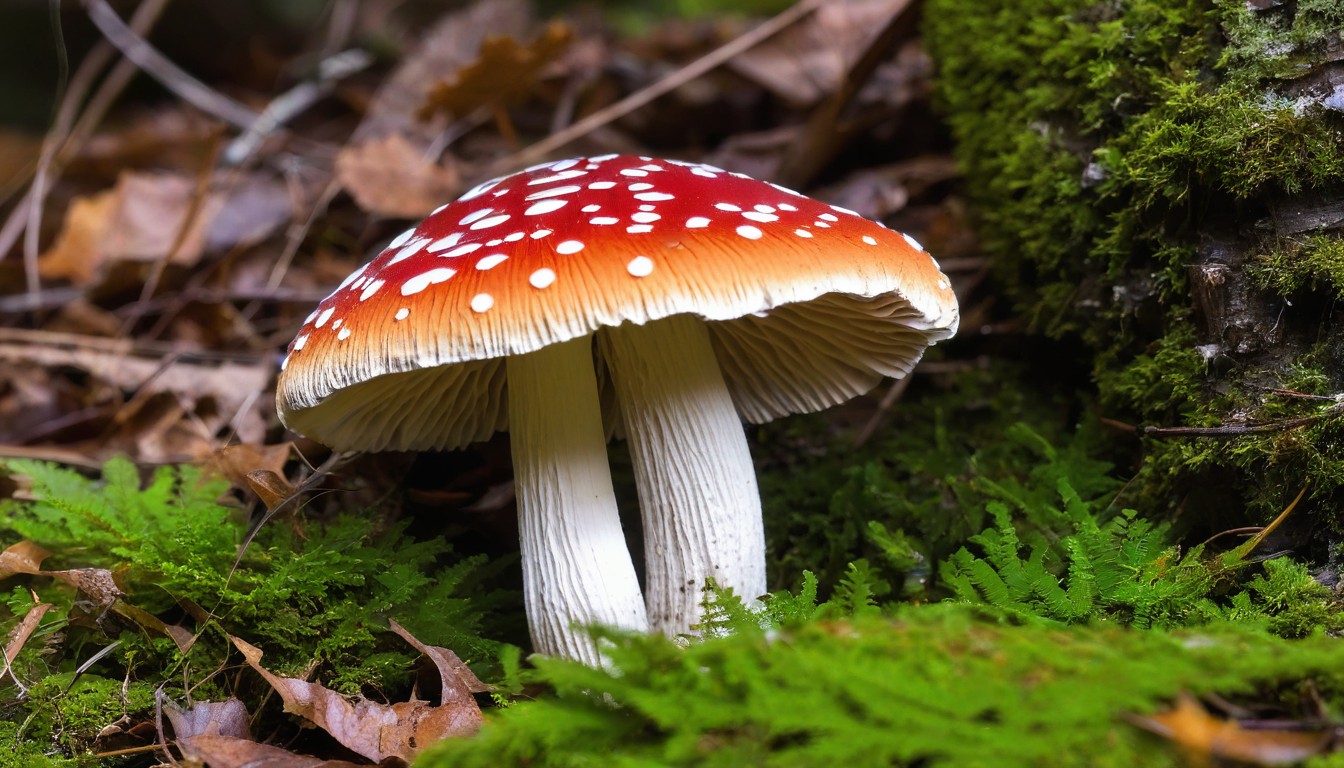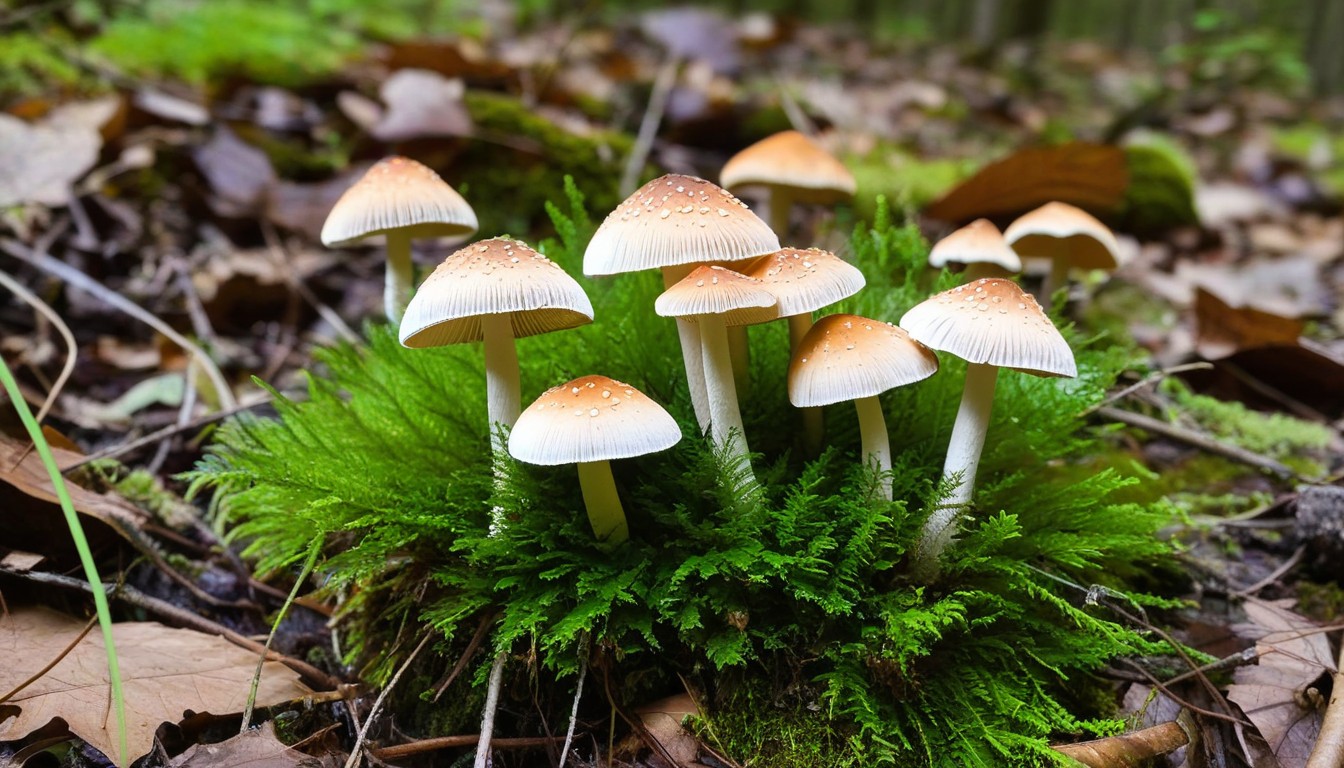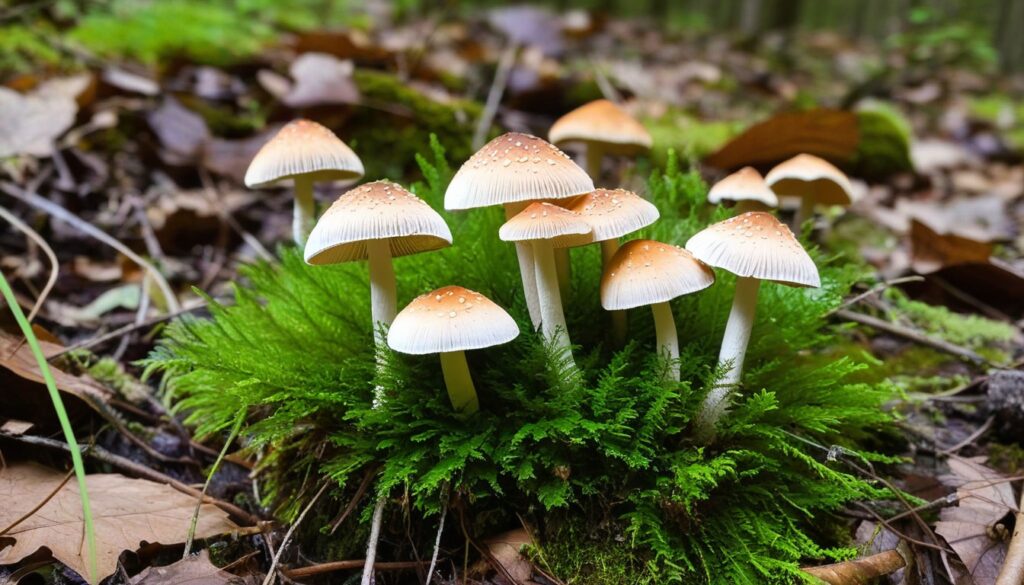Welcome to our comprehensive guide to the poisonous mushrooms found in the beautiful forests of West Virginia. While mushroom foraging can be a fun and exciting experience, it’s crucial to stay informed about the potential dangers that lurk in the wild. This guide will equip you with the knowledge necessary to easily identify dangerous mushrooms and stay safe on your adventures in West Virginia.
Key Takeaways
- Be aware of the common poisonous mushrooms found in West Virginia.
- Identify the key characteristics of poisonous mushrooms to differentiate them from non-toxic varieties.
- Understand the potential toxic effects of consuming poisonous mushrooms.
- Take necessary precautions while foraging mushrooms to avoid accidental poisoning.
- Know the first aid measures to take in case of mushroom poisoning.
Why it’s Critical to Identify Poisonous Mushrooms
While foraging for mushrooms in West Virginia can be an exciting and rewarding experience, it’s important to be able to differentiate between poisonous and non-poisonous varieties. Accidental ingestion of a poisonous mushroom can cause severe harm, so learning how to recognize them can protect you and your loved ones.
Safety should always be the top priority while exploring nature, so don’t hesitate to stay cautious and alert at all times.
Common Poisonous Mushrooms in West Virginia
West Virginia is home to a wide variety of mushrooms, many of which are edible and delicious. However, it’s crucial to be able to recognize the specific types of poisonous mushrooms that can be found in the state, as consuming them can lead to serious health complications. Here are some of the most common poisonous mushrooms to watch out for:
|
Mushroom Name |
Identifying Characteristics |
Toxic Effects |
|---|---|---|
|
Death Cap |
Smooth, greenish-brown cap with white gills above the bulbous stem |
Can cause severe liver damage, leading to death in some cases |
|
Destroying Angel |
Pure white with a cap that is convex to flat and smooth to slightly sticky |
Can cause organ failure, leading to death in some cases |
|
Jack-O’-Lantern |
Bright orange, often growing in clusters |
Can cause vomiting, cramps, and diarrhea |
|
False Morel |
Wrinkled, convoluted cap, resembling a brain |
Can cause nausea, vomiting, and, in extreme cases, seizures |
It’s worth noting that not all poisonous mushrooms look the same, and some can easily be mistaken for edible varieties. Therefore, it’s crucial to thoroughly research and learn about different types of mushrooms before consuming or handling them.
Identifying Characteristics of Poisonous Mushrooms
When it comes to identifying poisonous mushrooms in West Virginia, it’s crucial to know what to look for. Here are some key characteristics that can help differentiate poisonous mushrooms from harmless varieties:
|
Identifying Characteristics |
Poisonous Mushrooms Examples |
|---|---|
|
Caps |
Death cap, destroying angel, fool’s mushroom |
|
Gills |
Pale to bright yellow mushrooms, jack o’lantern |
|
Stems |
Webcaps, cortinarius mushrooms |
|
Odors |
Chlorine-like, geranium-like, mealy, indistinct |
|
Taste |
Bitter, acrid, metallic |
Remember, not all poisonous mushrooms look or smell the same, and some can be difficult to identify without an expert’s help. If you are unsure or have any doubts, it’s best to err on the side of caution and avoid consuming any mushrooms you come across in the wild.
Toxic effects of consuming poisonous mushrooms
Consuming poisonous mushrooms can have severe toxic effects on your health. Symptoms may vary depending on the type of mushroom, the amount consumed, and the individual’s sensitivity. Some common toxic effects include:
|
Toxic Effects |
Description |
|---|---|
|
Nausea and vomiting |
Can occur shortly after consuming poisonous mushrooms and may persist for several hours. |
|
Diarrhea |
May develop within hours of consumption and can range from mild to severe. |
|
Abdominal pain |
May be intense and severe, especially in cases of severe poisoning. |
|
Organ damage |
In severe cases, poisonous mushrooms can cause damage to the liver, kidneys, and other vital organs. |
|
Neurological symptoms |
Some poisonous mushrooms can affect the nervous system, leading to symptoms such as confusion, hallucinations, and seizures. |
|
Death |
In extreme cases, consuming poisonous mushrooms can be fatal, particularly if medical attention is delayed. |
If you suspect that you or someone you know has consumed a poisonous mushroom, it’s essential to seek medical attention immediately. Delaying treatment can result in severe and potentially life-threatening complications.
To avoid consuming poisonous mushrooms, it’s best to stick to edible varieties that you can confidently identify or purchase from a reliable source. If you’re unsure about the safety of a particular mushroom, it’s best to err on the side of caution and avoid it altogether.
Tips for Safely Foraging Mushrooms in West Virginia

Foraging for mushrooms in West Virginia can be an exciting and rewarding experience, but it’s crucial to take precautions to stay safe from poisonous varieties. Follow these essential tips:
- Bring a reliable field guide: Always bring a recently updated field guide to help you identify different types of mushrooms. Make sure the guide covers the region you’ll be exploring in West Virginia.
- Start small: If you are new to mushroom foraging, start by identifying familiar edible mushrooms. Only move on to more advanced identification once you have adequate experience.
- Inspect mushrooms closely: Before collecting any mushrooms, inspect them closely and examine their identifying characteristics. Avoid mushrooms that show signs of decay, insect damage, or any abnormal features.
- Don’t rely on color alone: Many poisonous mushrooms look similar to harmless species. Never rely on color alone; mushroom identification requires a comprehensive approach.
- Avoid consuming unknown mushrooms: Never consume mushrooms if you are unsure of their species. When in doubt, dispose of them and refer to your field guide.
- Dress appropriately: Wear closed-toe shoes and long pants to protect yourself from poisonous plants and insects that can be found in the forest.
- Inform others of your whereabouts: Before heading out, let someone know where you will be and when you expect to return. In the event of an emergency, this information can be critical for receiving timely assistance.
Edible Mushrooms in West Virginia

While it’s essential to be aware of poisonous mushrooms, it’s equally exciting to discover the numerous edible varieties that grow abundantly throughout West Virginia’s forests. Here are some popular and tasty types of mushrooms you can safely enjoy:
|
Mushroom |
Appearance |
Flavor Profile |
|---|---|---|
|
Chanterelle |
Golden or yellowy-orange cap with a thick stem and distinctive gill pattern |
Rich, nutty flavor with a fruity aroma |
|
Morel |
Cone-shaped cap with a sponge-like texture and a hollow stem |
Eartthy, nutty flavor with a slightly smoky aroma |
|
Chicken of the Woods |
Large, fan-like caps with bright orange to yellow colors and a velvety texture |
Meat-like texture with a mild, savory taste |
|
Puffball |
Globe-shaped or flattened white cap with no stem |
Mild, nutty flavor and soft, delicate texture |
Remember, always be sure of the mushroom’s identification before consuming it and use a reputable identification guide or take an expert with you.
Resources for Mushroom Identification in West Virginia

Becoming knowledgeable about identifying mushrooms is an ongoing process that involves persistence and analysis of various resources. West Virginia offers several enlightening resources useful for refining your mushroom identification skills.
Here’s a list of valuable mushroom identification resources in West Virginia:
|
Resource |
Description |
|---|---|
|
West Virginia Mushroom Club |
Connect with fellow mushroom enthusiasts, attend workshops, and learn from seasoned mycologists. |
|
Field Guide to Mushrooms of Western North America |
A highly recommended guidebook, covering all major mushroom types found in Western North America. |
|
Wild Edible |
A website with an extensive library of mushroom photos, descriptions, and identification tools, as well as mushroom events and news. |
|
Mushroom Observer |
Share your mushroom observations and receive feedback from the online community. |
By utilizing these resources, you can gain a deeper understanding of mushroom identification and be better equipped to differentiate between edible and poisonous varieties.
Precautions for Exploring Mushroom-Rich Environments with Children and Pets in West Virginia
While foraging in mushroom-rich environments can be an exciting and adventurous activity for the whole family, it’s important to exercise extra caution when accompanied by young children or pets. Follow these precautions to ensure that your outing remains safe and enjoyable:
- Always supervise children and pets: Keep a watchful eye on young children and pets at all times to prevent them from ingesting poisonous mushrooms.
- Teach children to recognize and avoid dangerous mushrooms: Educate your children about the dangers of poisonous mushrooms, and teach them how to identify safe and unsafe varieties.
- Keep a safe distance from wild mushrooms: Teach children and pets to appreciate mushrooms from a distance, and avoid the temptation to touch or taste them.
- Wash hands and pets: After exploring, make sure to wash your hands and pets thoroughly to remove any potentially harmful spores.
By following these simple precautions, you can enjoy a fun-filled day of mushroom foraging with your loved ones in the beautiful forests of West Virginia, while ensuring their safety and well-being.
First Aid Measures for Mushroom Poisoning
If you suspect that a person has consumed a poisonous mushroom, time is of the essence. Seek medical assistance immediately. While waiting for professional help to arrive, take the following critical first aid steps:
- Do not induce vomiting. Attempting to induce vomiting can worsen the situation and lead to additional injury.
- Treat symptoms. If the person is experiencing symptoms such as nausea, diarrhea, or cramps, consult a medical professional or poison control center for guidance.
- Save a sample. Collect a sample of the mushroom in question for identification purposes. Avoid handling the mushroom with bare hands and keep it in a sealed container. Label the container with date, time, and location of mushroom collection.
- Do not wait. Even if the person does not appear to be showing severe symptoms, mushroom poisoning can have delayed effects. It’s crucial to seek medical assistance promptly.
Remember, prevention is the best cure. Avoid consuming mushrooms that you are not 100% certain are safe to consume. Familiarize yourself with the types of poisonous mushrooms in West Virginia. Always double check your identification and when in doubt, err on the side of caution.
Conclusion
As you venture into the beautiful forests of West Virginia, it’s essential to arm yourself with knowledge and caution when it comes to identifying and consuming mushrooms. By following the tips and precautions outlined in this guide, you can keep yourself and your loved ones safe from the potential dangers of poisonous varieties. Remember to always be vigilant and consult expert resources if you are unsure of a mushroom’s identity.
However, don’t let the fear of poisonous mushrooms deter you from exploring the rich diversity of edible varieties that can be safely enjoyed. With proper guidance and careful foraging, you can discover a whole new world of delicious and nutritious mushrooms to incorporate into your meals.
Ultimately, it’s about striking a balance between caution and curiosity when it comes to the fascinating world of mushrooms in West Virginia’s forests. Happy and safe foraging!
FAQ
Why is it important to identify poisonous mushrooms?
It is important to be able to identify poisonous mushrooms to prevent accidental ingestion and potential harm to yourself or others.
What are some common poisonous mushrooms in West Virginia?
Some common poisonous mushrooms found in West Virginia include the Death Cap, Destroying Angel, and Fool’s Webcap.
What are the identifying characteristics of poisonous mushrooms?
Poisonous mushrooms often have distinctive features such as a foul odor, slimy caps, or brightly colored gills.
What are the toxic effects of consuming poisonous mushrooms?
Consuming poisonous mushrooms can lead to a range of toxic effects, including nausea, vomiting, abdominal pain, organ failure, and even death in severe cases.
What are some tips for safely foraging mushrooms in West Virginia?
To safely forage mushrooms in West Virginia, it is essential to educate yourself, only pick mushrooms you can confidently identify, and consult experienced foragers or field guides.
Are there edible mushrooms commonly found in West Virginia?
Yes, West Virginia is home to a variety of edible mushrooms, such as morels, chanterelles, and chicken-of-the-woods.
What are some resources for further mushroom identification in West Virginia?
There are several resources available for mushroom identification in West Virginia, including field guides, online forums, and local mycological societies.
What precautions should I take when exploring mushroom-rich environments with children or pets?
When in mushroom-rich environments with children or pets, it is important to educate them about the potential dangers, closely supervise them, and prevent them from ingesting any unknown mushrooms.
What are the first aid measures for mushroom poisoning?
In case of accidental mushroom poisoning, it is crucial to seek medical assistance immediately and to avoid inducing vomiting unless advised by a healthcare professional.

